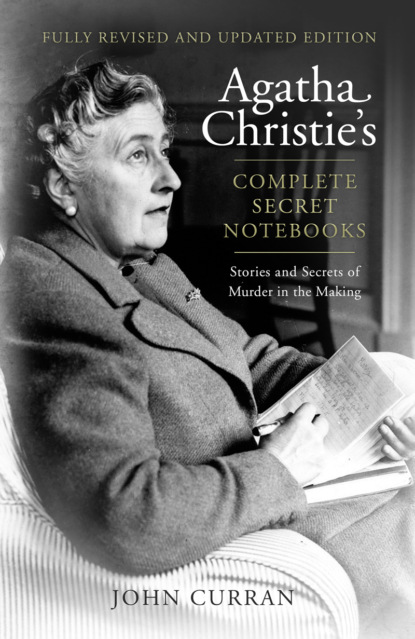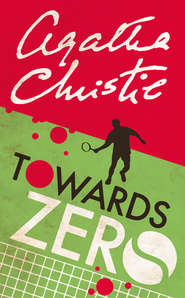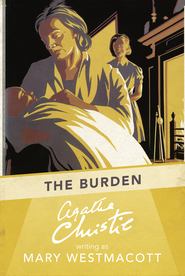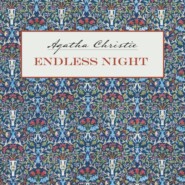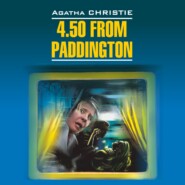По всем вопросам обращайтесь на: info@litportal.ru
(©) 2003-2025.
✖
Agatha Christie’s Complete Secret Notebooks
Настройки чтения
Размер шрифта
Высота строк
Поля
Notes on books
Deliverance – James Dickey
The Driver’s Seat – Muriel Spark
A Start in Life – Alan Sillitoe
Let’s go to Syon Lodge Ltd. (Crowthers) – 20 mins. by car from Hyde Park Corner – on way to airport – Xmas shopping? Collingwood in Conduit St
Remark made by McCauley ‘To be ruled by a busybody is more than human nature can bear’
What is this focal point of (an accused person imprisoned) – R’s son – a failure – R. always knew when he was lying
The plotting of One, Two, Buckle my Shoe and a listing of possible short story ideas is interrupted by a social message from her great friend Nan Gardner:
H.P. not satisfied – asks about bodies – at last – one is found
All away weekend – can we go Thursday Nan
Ideas (1940)
A. 2 friends – arty spinsters – one a crook – (other camouflage) they give evidence – possible for Miss Marple
A list of ideas, some of which became Death in the Clouds, The ABC Murders and ‘Problem at Sea’, is put on hold for three pages of Christmas presents:
C. Stabbed by an arrow – Stabbed by dart (poison) from blow pipe
Jack [her brother in law] – Dog?
Mrs E – Menu holders
Aunt Min – blotter and notepaper stand
Barbara – bag and scarf
Joan – Belt?
D. Ventriloquist
E. Series of murders – P gets letter from apparent maniac – First – an old woman in Yorkshire
Three Act Tragedy is preceded by an address and phone number:
Toby, 1 Granville Place, Portman Street Mayfair 1087
P suggests Egg should tackle Mrs Dacres
Travel details appear in the middle of ‘The Capture of Cerberus’ (‘Robin’ was possibly Robin McCartney, who drew the jacket designs for Death on the Nile, Murder in Mesopotamia and Appointment with Death):
Young widow – husband missing believed killed – P sees him in ‘Hell’
Any Thursday by afternoon train Robin
Combine with idea of man who has gone under – Dead? A waiter in Hell?
As can be seen, Christie’s creativity was not exclusive – she was able to plot a murder while making a social appointment, or consider a murder weapon while compiling a reading list, or mull over a motive while transcribing travel directions. Throughout the Notebooks she is Agatha Christie, Queen of Crime while always remaining Agatha, the family member.
One of the many lists of books scattered throughout the Notebooks, this one across two pages lists crime novels from the late 1930s/early 1940s, including titles by Simenon, Wentworth, Innes, Ferrars and Sayers …
… Her publishers would send Agatha books to read, and indeed the page above is headed ‘From Collins’.
Motive and Opportunity
One of her most personal creations, Ariadne Oliver, is generally accepted as Christie’s own alter ego. Mrs Oliver is a middle-aged, successful and prolific writer of detective fiction and creator of a foreign detective, the Finnish Sven Hjerson. She hates literary dinners, making speeches, or collaborating with dramatists; she has written The Body in the Library and doesn’t drink or smoke. The similarities are remarkable and there can be little doubt that when Mrs Oliver speaks we are listening to Agatha Christie.
In Chapter 2 of Dead Man’s Folly Mrs Oliver shrugs off her ingenuity:
‘It’s never difficult to think of things,’ said Mrs Oliver. ‘The trouble is that you think of too many, and then it all becomes too complicated, so you have to relinquish some of them and that is rather agony.’
And again, later in Chapter 17 she says:
‘I mean, what can you say about how you write your books? What I mean is, first you’ve got to think of something, and then when you’ve thought of it you’ve got to force yourself to sit down and write it. That’s all.’
It was as simple as that and, for half a century, exactly what her creator did.
The process of production was, as we have seen, random and haphazard. And yet, this seeming randomness was transformed into an annual bestseller; and, for many years, into more than one bestseller. For more than half a century she delivered the latest ‘Christie for Christmas’ to her agent; for a quarter century she presented London’s West End with one theatrical success after another; she kept magazines busy editing her latest offering. And all of them – novels, short stories and plays – flow with the fluid precision of the Changing of the Guard.
So although it is true that she had no particular method, no tried and true system that she brought with her down the long years of her career, we know this appearance of indiscriminate jotting and plotting is just that – an appearance. And eventually we come to the realisation that, in fact, this very randomness is her method; this is how she worked, how she created, how she wrote. She thrived mentally on chaos, it stimulated her more than neat order; rigidity stifled her creative process. And it explains how the Notebooks read from both ends, how they leap from one title to another on the same page, how different Notebooks repeat and develop the same ideas and why her handwriting can be impossible to read.
Notebook 15 and the plotting of Cat Among the Pigeons illustrate some of these points. She talks to herself on the page:
How should all this be approached? – in sequence?
Or followed up backwards by Hercule Poirot – from disappearance … at school – a possibly trivial incident but which is connected with murder? – but murder of whom – and why?
She wonders and speculates and lists possibilities:
Who is killed?
Girl?
Games mistress?
Maid?
Foreign Mid East?? who would know girl by sign?
Or a girl who?





